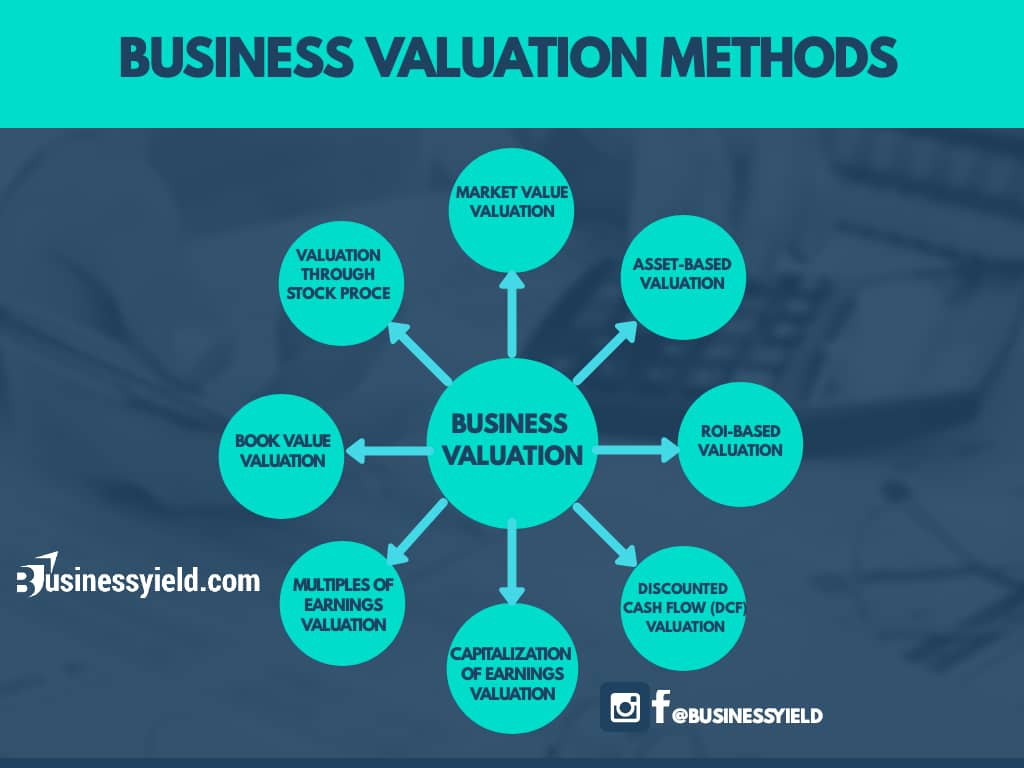Business valuation is to simply determine the economic worth/value of a company or part of a company. For instance, when some business bodies release their top 100 most valued small businesses, business valuation methods were employed to ascertain the value of those small businesses.
Some of the factors considered during a company’s valuation include; the worth of your equipment, inventory, property, liquid assets, and all other assets owned by the company through which economic benefit is derived. Other factors that might come into play are your management structure, projected earnings, share price, revenue, and lots more.
In this article, you will learn how to find the value of any company, both big and small. You will also learn why businesses do a valuation and the methods that can be used.
What is the purpose of a business valuation?
There are a few reasons why one would want to evaluate one’s business. Your purpose in business valuation would determine which of the business valuation approaches to use. Here are a few reasons to find the worth of your company.
1. Want to sell a business
You wouldn’t want to sell your business below its actual worth. And the buyer wouldn’t purchase on an estimated or speculative amount that is above the worth of the business. So, it’s important for a business valuation to be done to arrive at an aggregate amount.
2. Looking for an investor
Another purpose of business valuation is to ascertain the worth of any amount invested by an investor and a fair return of investment (ROI) to the investor.
3. Merger and acquisitions
When a business is looking forward to merging or acquiring another business, it’s important to know the value of both businesses using diverse business valuation methods. This would help enhance a smooth transaction.
4. Need to determine ownership percentage
What percentage a business partner should control sometimes is based on what the partner has contributed to the business. But, how do you determine what the contribution is worth to the business without a good business valuation process? Consulting a business valuation expert can be a good way to start if the business valuation approaches seem hard for you to understand.
The purpose of business valuation also would include the need to ascertain shareholders stake. Also, tackling some tax issues or even during divorce proceedings to ascertain what a partner should part with.
For small businesses, the small business valuation methods to be considered is dependent on the purpose of business valuation.
The later part of this article will show the business valuation methods you can use to determine the economic value of any business.
8 Business Valuation Methods
The business valuation approaches to use depends on the nature of your business.
See which approach gives you the closest or the most accurate worth of your business.
Here are 8 business valuation methods.
1. Market Value business valuation approach
This method takes a stand from the business valuation formula which says, similar businesses can be placed on a similar or the same economic worth.
The business valuation example to use is this; if company A that’s into polymer and textile production wants to sell their business, they might want to see what their competitor (similar textile and polymer producers) sold previously. Then, they study the parameter they used to arrive at their sales price.
While this business valuation formula doesn’t give a precise amount, it gives speculations of what the business can expect during the business valuation process.
This business valuation approach might not be the best for sole proprietors, as one would hardly find data from businesses sold by sole proprietors. If you rely on this approach, you sure would need to know how to negotiate.
2. Asset-based valuation method
This business valuation formula takes into consideration the asset value of the business at the point of sale.
This approach considers your business’s total net asset value, minus the value of its total liabilities, according to your balance sheet.
Understanding this business valuation process, one assumes that the business is closed and all assets liquidated. If these assets are sold, how much will be realized from the sales?
One of the cons of this business valuation process is that sales price realized wouldn’t be the real market value. Another is that certain assets might not be put into consideration especially intangible assets like the company brand name (brand reputation).
3. ROI based valuation
This process takes into account the profit made by the company and how much an investor can get as a return on investment (ROI). One might need to understand the yield theories of business first.
An example; if you will give an investor a 20% ownership on a $100,000 investment, it means the remaining 80% of the business is worth $400,000. In essence, the totality of your business before the investment is worth $500,000.
Using this business valuation formula is best if the purpose of a valuation is to apportion a share percentage to an investor.
The investor would love to know what his ROI would be subject to the market, how long it would take, is the investment profitable enough for the investor to put in his money?
If you give out 50% for $100,000, you are only saying he owns 50% of your business and your business is worth $200,000 before the investment. This approach would demand you negotiate properly so you do not sell off your company for money.
Read Also: How to calculate the yield of any business (big and small)
4. Discounted cash flow(DCF) method
While the previous business valuation methods discussed are considered the commonly used business valuation approaches, they, however, do not give the most accurate worth. The discounted cash flow formula considers your company financial data like the profit as it appears in the business cashflow.
This business valuation formula also called the income approach, values a company based on its projected cash flow adjusted (or discounted) to the present value. In determining this, you examine the time value of that cash flow. By this I mean, how much will that cash flow worth today? Taking into consideration the fluctuations in the capital market and time value of money.
The DCF method can be particularly useful if your profits are not expected to remain consistent in the future.
5. Capitalization of Earnings Business Valuation Method
This and subsequent business valuation methods to be discussed uses the financial data of your company.
This business valuation formula calculates the future profitability of your company. This profitability is based on its cash flow, annual ROI, and expected value.
It determines the value of your business on its ability to earn profit in the future. It assumes if it’s making a profit now, it can make profits in the future.
6. Multiples of Earnings Valuation Method
This method also determines a business’s value by its potential to earn in the future. Also known as the time revenue method, it calculates a business’s maximum worth by assigning a multiplier to its current revenue. Multipliers vary according to industry, economic climate, and other factors.
7. Book Value Valuation Method
Finally, the book value method calculates the value of your business at any given time by looking at your balance sheet.
With this approach, your balance sheet is used to calculate the value of your equity—or total assets minus total liabilities—and this value represents your business’s worth.
The book value approach may be particularly useful if your business has low profits, but valuable assets.
8. Valuation by Stock Price
This is not one of the valuation methods for small businesses.
This method is used to ascertain the value of a company through its stock price. Small companies do not trade stocks.
The process involves multiplying the price per share of the company by the number of publicly traded shares. For example, the company might have 1,000,000 publicly traded shares currently selling at $20 per share. One can deduce that at that given price, the business is worth $20 million.
A more practical business valuation example is this; Tesla as of April 25th, 2020, has total shares outstanding of 184million selling at $725.15 per share according to Nasdaq. Using this stock price valuation, Tesla company is worth 184million×$725.15= $133.4276billion as of the said date.
While this might be the simplest method, it’s sure not the best and can be very risky. This is because numerous factors affect share prices. They might have nothing to do with the actual worth of the business.
The share price of any business is based on the perceived value of the company, which may not reflect the actual worth. The subjective side of stock prices is one reason they fluctuate.
Amongst these methods, which do you consider the best for your business? Tell us in the comment session.







